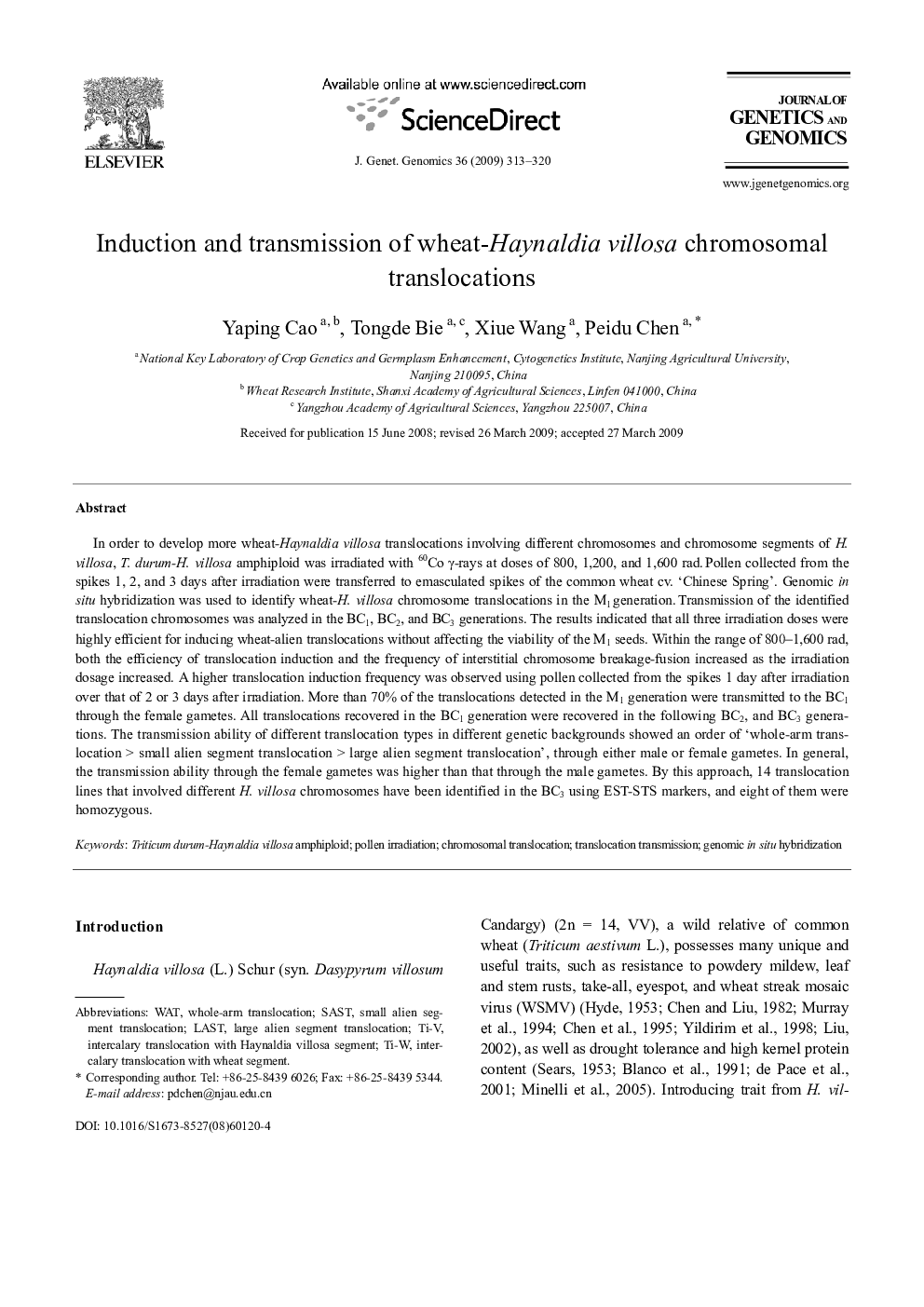| کد مقاله | کد نشریه | سال انتشار | مقاله انگلیسی | نسخه تمام متن |
|---|---|---|---|---|
| 2787767 | 1154349 | 2009 | 8 صفحه PDF | دانلود رایگان |

In order to develop more wheat-Haynaldia villosa translocations involving different chromosomes and chromosome segments of H. villosa, T. durum-H. villosa amphiploid was irradiated with 60Co γ-rays at doses of 800, 1,200, and 1,600 rad. Pollen collected from the spikes 1, 2, and 3 days after irradiation were transferred to emasculated spikes of the common wheat cv. ‘Chinese Spring’. Genomic in situ hybridization was used to identify wheat-H. villosa chromosome translocations in the M1 generation. Transmission of the identified translocation chromosomes was analyzed in the BC1, BC2, and BC3 generations. The results indicated that all three irradiation doses were highly efficient for inducing wheat-alien translocations without affecting the viability of the M1 seeds. Within the range of 800–1,600 rad, both the efficiency of translocation induction and the frequency of interstitial chromosome breakage-fusion increased as the irradiation dosage increased. A higher translocation induction frequency was observed using pollen collected from the spikes 1 day after irradiation over that of 2 or 3 days after irradiation. More than 70% of the translocations detected in the M1 generation were transmitted to the BC1 through the female gametes. All translocations recovered in the BC1 generation were recovered in the following BC2, and BC3 generations. The transmission ability of different translocation types in different genetic backgrounds showed an order of ‘whole-arm translocation > small alien segment translocation > large alien segment translocation', through either male or female gametes. In general, the transmission ability through the female gametes was higher than that through the male gametes. By this approach, 14 translocation lines that involved different H. villosa chromosomes have been identified in the BC3 using EST-STS markers, and eight of them were homozygous.
Journal: Journal of Genetics and Genomics - Volume 36, Issue 5, May 2009, Pages 313–320